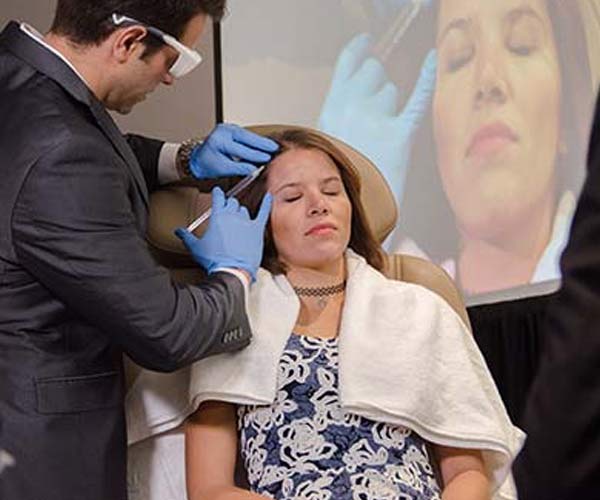Uneven Botox®: What It Is & How to Avoid It
By Dr. Stephen Cosentino
PRESIDENT OF EMPIRE MEDICAL TRAINING
One of the biggest complaints from patients who’ve just received botulinum toxin treatment — most commonly Botox® — is that the results appear uneven.
This complaint is particularly common following Botox injections into the forehead or eye area, for issues like crow’s feet, forehead lines, and glabellar lines.
Uneven Botox is concerning, even distressing, for patients. Fortunately, it’s often temporary; when it doesn’t resolve on its own, it usually can be corrected with follow-up injections.
What Is Uneven Botox?
Uneven Botox occurs when Botox results appear unevenly across the face. It’s most obvious when Botox is injected into both sides of the face, such as above both eyelids. It often presents as an “unbalanced” facial expression (such as one arched or droopy eyebrow) or tightness in the facial muscles of one side of the face but not the other.
Botox is much less risky than more invasive cosmetic surgical procedures, including traditional plastic surgery. And Botox side effects are significantly less common in cosmetic applications than therapeutic ones, according to a recent clinical study.
Still, Botox isn’t totally risk-free, so it’s important for patients (and providers) to recognize the signs of potential complications — even self-limiting ones like uneven Botox.
Signs of Uneven Botox
The signs of uneven Botox vary by injection site. They can include:
- One droopy eyelid (upper or lower)
- One arched eyebrow
- Crooked smile
- One-sided frozen smile
- Square jaw on one side of the face
The eyelids and eyebrows are particularly sensitive to Botox, which is why uneven Botox is so common in this part of the face. A millimeter or two is often all that separates an on-target injection from an off-target one.
Can Bad Botox Be Fixed?
Yes, bad Botox can be fixed. Many instances of uneven Botox results resolve on their own within two to three weeks.
Full Botox results take a week or longer to appear, so uneven Botox often isn’t noticeable in the first few hours or days after treatment. Use the treated muscles frequently during this period — for example, by arching both eyebrows or moving your forehead muscles — to spread the Botox throughout the area and ensure a more even appearance when it does begin to work.
How to Correct Bad Botox Treatments
Sometimes, bad Botox doesn’t go away on its own. If it persists two to three weeks from treatment, contact your injector or another Botox provider you trust and schedule a follow-up appointment.
At this appointment, the provider will inject small amounts of Botox — known as touch-up injections — across the original treatment area. These touch-ups should “fill in” results and produce a more even, natural appearance.
Can You Avoid Uneven Botox?
No, you can’t avoid temporary uneven Botox. A significant minority of Botox patients see uneven results in the first two to three weeks following treatment. This occurs even with the best providers.
Fortunately, again, most uneven Botox is temporary, and exercising the treated muscles can reduce its occurrence.
How to Avoid Bad Botox Injections
The best way to avoid bad Botox injections — including more serious, systemic complications — is to work with a board-certified plastic surgeon or other trained medical provider who has completed a comprehensive Botox training course.
If you plan to get dermal filler injections in addition to or in conjunction with Botox injections, make sure your provider has also completed advanced dermal filler training.
Because you deserve the very best Botox treatment money can buy.


